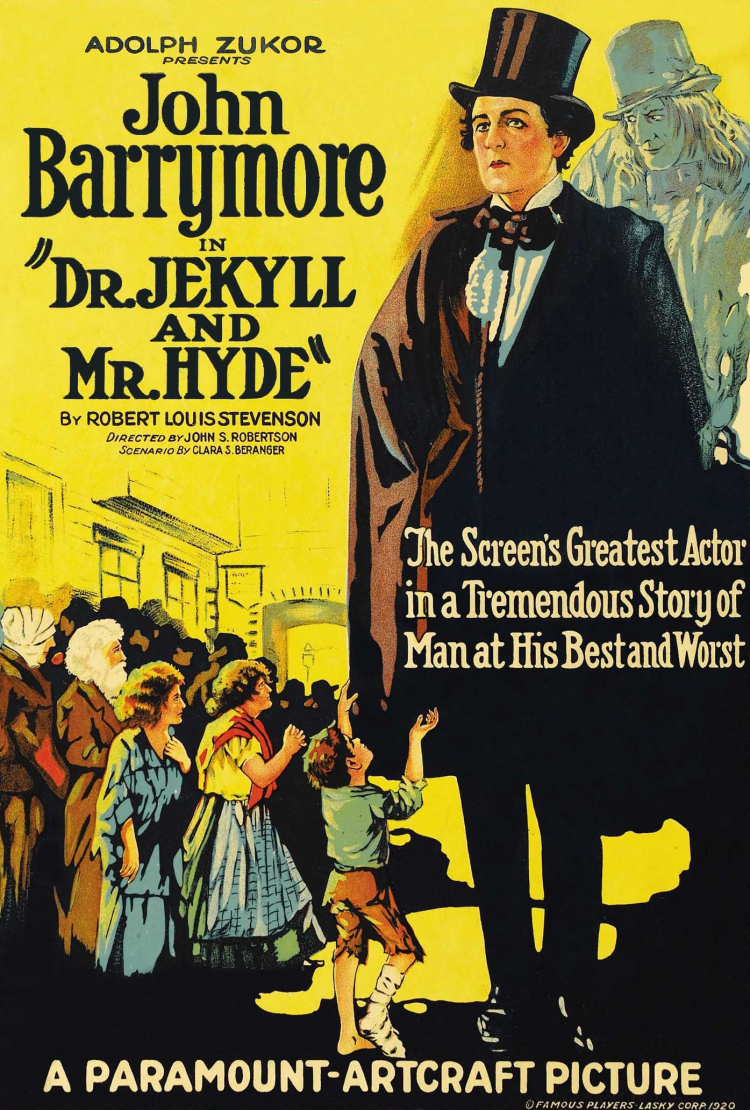Review: Dr. Jekyll and Mr. Hyde (1920)

Horror is one of the oldest genres art has to offer, and soon after film was invented in 1888, horror was quick to find its way into the new visual form. The John S. Robertson-directed "Dr. Jekyll and Mr. Hyde", despite having been released only 25 years after the concept of narrative film was invented, was in fact the 8th adaptation of the original novella, only being the first feature-length adaptation. The film was not even the only "Strange Case of Dr. Jekyll and Mr. Hyde" adaptation released in 1920. It was one of three, rivaled by another American production by a different company directed by J. Charles Haydon, and another in Germany by F.W. Murnau, who would go on to direct the now-classic "Nosferatu" two years later.
What separates Robertson's adaptation from the others that came before it, other than its length and the fact it still exists (some of the adaptations, including Murnau's, are unfortunately lost), is arguably the dual role performance of the two title characters, played by John Barrymore. Previous performances of the characters sometimes utilized one actor, others two, but virtually all that currently exist relied on cheap, amateur makeup and had limited on-screen debauchery. Barrymore however lets loose in the character of Mr. Hyde, with a shocking and genuinely unsettling make-up job that through his inspired body contortions and devious facial expressions make him almost unrecognizable as the same person who plays the upright and unflinching Dr. Jekyll.
The film's plot does not deviate much from the original source material, only compressing where time wouldn't allow. Dr. Jekyll, morally upstanding to a fault and having seemingly never given into immoral desires even once, is finally tempted too far, and resolves to find a way to delineate all the evil that a man is capable of into a wholly separate being from the self. Thus, Mr. Hyde, only capable of pure wickedness, is born, inhabiting the body of Dr. Jekyll, only brought to the surface by a special serum of his own invention.
Through the film's length, we are able to see all the steps of the descent of Hyde from cold evil to something even lower than that, and Jekyll's descent from moral arbiter to a hollowed out shell, as he tries to keep a handle on the being that lives inside him and is gradually taking over. Barrymore is able to brilliantly capture two distinct roles fighting for control, looking, feeling, acting worlds apart from the other, crafting a wonderfully layered role that goes beyond the standard-fare script and injects real pathos into a role that before had arguably not reached its full potential on film.
Unlike other adaptations of the Jekyll and Hyde story that had come before, this film has stood the test of time critically, holding firm against retrospectives that have not been kind to previous adaptations that were raved about in their day. While perhaps not as pioneering in all aspects as other films of its era such as "The Cabinet of Dr. Caligari", "Dr. Jekyll and Mr. Hyde" is a great advancement in the horror genre and remains a silent classic to this very day.
The "Mad Scientists and Strange Inventions" program at the Jérôme Seydoux-Pathé Foundation will run until November 23.







